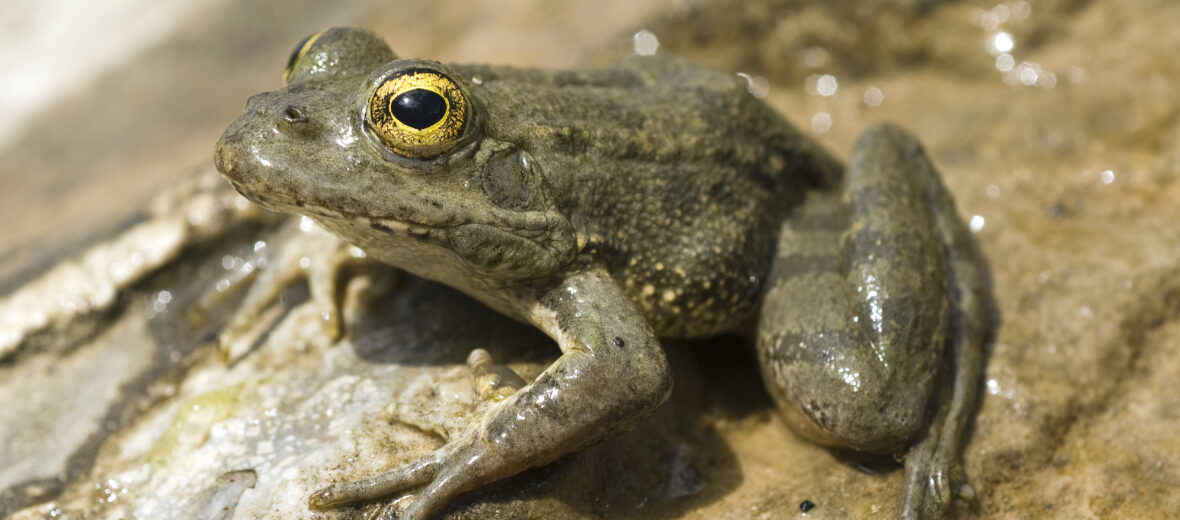
The Karpathos frog belongs to the Ranidae (true frog) family. They can only be found on the island of Karpathos, in the South Aegean Sea, in Greece. They prefer rivers, intermittent rivers, freshwater lakes, intermittent freshwater lakes, freshwater marshes, intermittent freshwater marshes, arable land, ponds, and Mediterranean-type shrub vegetation. These amphibians are considered to be the most endangered frogs in Europe. The IUCN lists them as Critically Endangered. Their numbers are also decreasing. Enjoy Critter Science’s 1,400th article!
First the Stats…
Scientific name: Pelophylax cerigensis
Weight: Up to 1+ ounce
Length: Up to 2.75 inches
Lifespan: Up to 10 years
Now on to the Facts!
1.) These frogs are listed as Critically Endangered due to their extremely limited range of 2.48 square miles.
2.) They face the threats of habitat loss and destruction at the hands of residential & commercial development, logging, agriculture, fire suppression, and dams; pollution; climate change; and the effects of tourism.
3.) This frog species is restricted to 2 small rivers in the north part of Karpathos island, near Mount Olympus.
4.) There have been reports of a subpopulation of these frogs on Rhodos Island. However, this has not been confirmed.
5.) Beetles, spiders, isopods, and various hymenopterans (sawflies, wasps, bees, and ants) make up their diet.
But wait, there’s more on the Karpathos frog!
6.) Like all amphibians Karpathos frogs breathe, in part, through their skin. Their permeable skin also absorbs water, so they never have to formally drink standing water; they just have to soak in water to obtain their much needed moisture.
7.) Females lay upwards of a few hundred eggs each season.
Did you know…?
The Karpathos frog was only discovered in 1994 by Beerli et al.
8.) These frogs produce a loud, piercing, croaking call; especially during mating season.
9.) Like most frogs, they are nocturnal (active at night).
10.) Natural predators of these frogs are presumed to be owls, other predatory birds, and dragonfly larvae (that prey on the tadpoles).
Be sure to share & comment below! Also, check out the Critter Science YouTube channel. Videos added regularly!
Want to suggest a critter for me to write about? Let me know here.
Some source material acquired from: Wikipedia & IUCN
Photo credit: Benny Trapp



